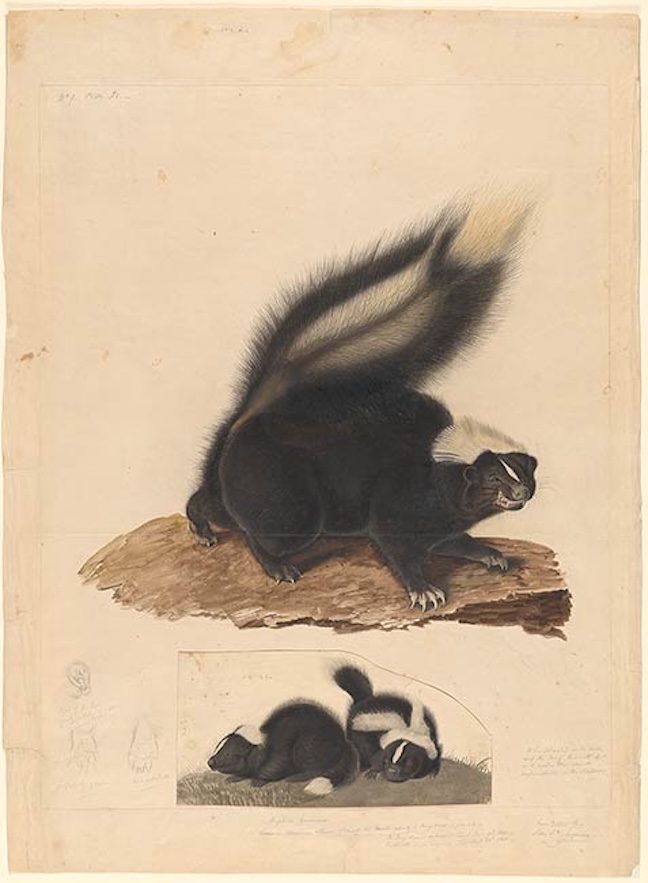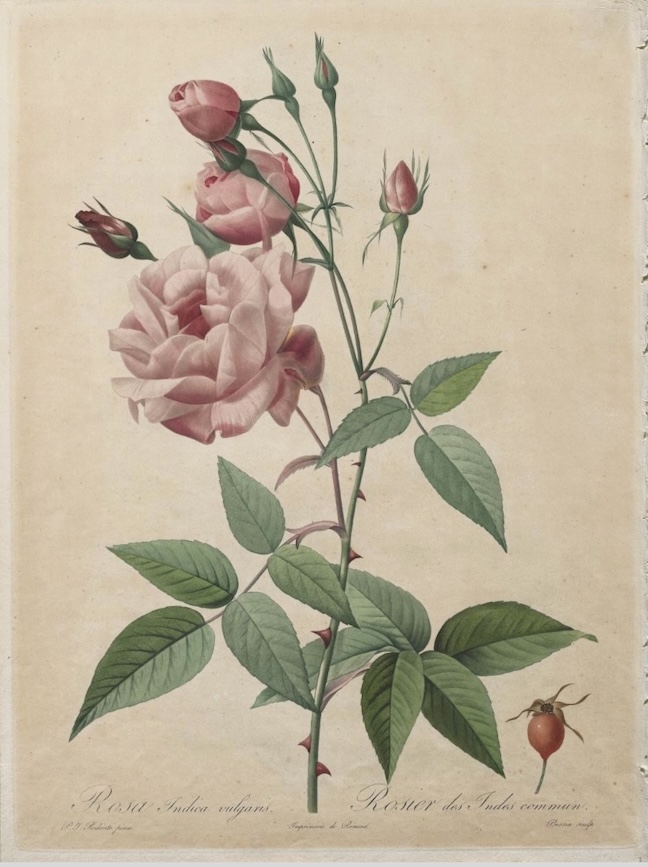I was speaking to one of my Capuchin confreres recently who had just returned from visiting his family. He remarked that there were a number of skunks around his sister’s home. These little creatures can be quite cute. Skunks are notorious, however, for their ability to spray a liquid with a strong, unpleasant scent. God, providentially, in a manner that only He could have ingeniously conceived, gave this ability to skunks in order to protect them from predators. My confrere then related that his sister’s dog had just been a victim. Only after three baths was the dog washed clean of the horrid smell.
In doing some online research on skunks, I found a fascinating account of a Jesuit who had arrived in what is today the United States and Canada. He was in awe of all the new and various species of animals that he was now encountering, for they were not present in Europe. One such animal was the skunk.
In 1634, he wrote in The Jesuit Relations (accounts sent back to France of what the Jesuits were experiencing in the “new world”) that there was a “low animal, about the size of a little dog or cat. I mention it here, not on account of its excellence, but to make of it a symbol of sin.” He proceeds to describe what a skunk looks like and concludes by noting how foul-smelling it is:
No sewer ever smelled so bad. I would not have believed it if I had not smelled it myself. Your heart almost fails you when you approach the animal; two have been killed in our court, and several days afterward there was such a dreadful odor throughout our house that we could not endure it. I believe the sin smelled by Saint Catherine de Sienne must have had the same vile odor.

So, the Jesuit makes two points concerning skunks. First, he equates the smell that a skunk makes with the smell of sin. Second, he likens the smell of a skunk to the experience of St. Catherine of Siena (d. 1380) – her ability to “smell” sin.
This tidbit of information led me back to the Internet. What I found was that St. Catherine related to her confessor, Raymond of Capua, that “the stench of sin” was so overpowering among some of those who came to see her that she could not endure it. Catherine knew a sinful skunk when she smelled one.
The ability of saints to smell sin is not unusual. Padre Pio, for example, when hearing Confessions, had the ability to smell mortal sin. It is reported that such sins smelled “putrid,” “foul,” like the smell of a “rotting corpse.” Conversely, when penitents made an honest and contrite Confession, Padre Pio would smell flowers. This was a manifestation of the “odor of sanctity,” a sweet fragrance of roses, violets, or jasmine. Thus, though sinners smell like a skunk, there’s an odor of sanctity for those in the state of grace.
For example, Saint Thérèse of Lisieux, the “Little Flower,” is reported to have smelled like roses, especially upon her death. Likewise, the body of Saint Teresa of Ávila emitted a sweet perfume that filled her monastery when she died. And similarly, many witnesses reported that Saint Padre Pio, during his life, had the odor of flowers or incense, especially emanating from his stigmata.
Although the odor of sanctity became particularly evident upon the death of the above saints, that odor would have been present during their lives, for it was while they were alive that they became holy. Evidence of such holiness became unmistakably evident upon their sweet-smelling deaths.

These grace-filled phenomena find their basis in the risen Lord Jesus. When Jesus came to raise his friend Lazarus from the dead, Martha pointed out that, since he had been dead for four days, there would be an odor. If this event had taken place in North America, she might have said that Lazarus would have smelled like a skunk. What Martha forgot is Jesus’ declaration: “I am the resurrection and the life; he who believes in me, though he die, yet shall he live, and he who lives and believes in me shall never die.” (John 11:25-26)
The raising of Lazarus from the dead was a prophetic anticipation of Jesus’ own death and resurrection. In dying on the Cross, Jesus put death to death, and in rising gloriously from the dead He brought forth eternal life. The stench, the odor, of sin and death is now cast away by the odor, the fragrance, of everlasting life.
St. Paul declared to the Corinthians:
But thanks be to God, who in Christ always leads us to triumph, and through us spreads the fragrance of the knowledge of him everywhere. For we are the aroma of Christ to God among those who are being saved and among those who are perishing, to one a fragrance from death, to the other a fragrance of life to life. (2 Corinthians 2:14-16)
Christians, through their preaching and life, spread the fragrance of the living Jesus to all who are being saved. They are not skunks, for they radiate the aroma of Christ throughout the world and for all time. That Christ-imbued fragrance is also spread among those who are perishing.
Among those on their way to a sinful death, however, this fragrance testifies to their eternal condemnation. What is a fragrance of a sanctifying life to those who will live forever, is a skunk-like odor for those awaiting the never-ending fires of Hell – they will ever smell like a sinful skunk.
Here, one finds the importance of Purgatory. Those who are in Purgatory are being purged of sin’s skunk-like smell, and they are taking upon themselves the aroma of the living Jesus in whom they will dwell as the Spirit-transformed children of the Father.










